On Sunday, my sister, sister-in-law and I took a little excursion to the George Eastman House to catch a breath of spring.
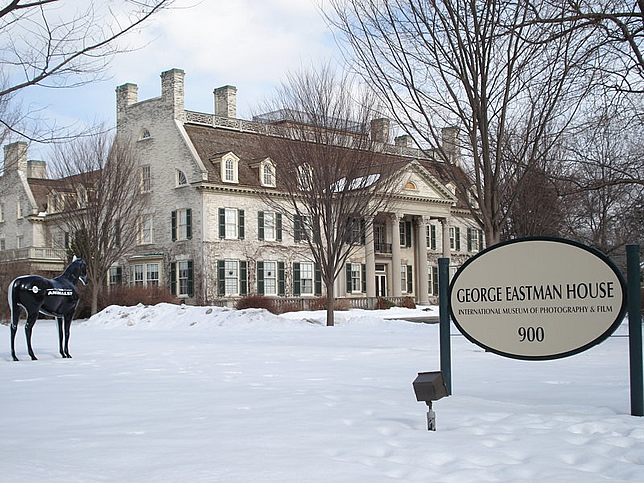
(*this photo from http://www.vanguardist.org/index.php?/archives/874-New-galleries-Washington-and-Rochester.html)
This National Historic Landmark built between 1902 and 1905 was featuring a winter/spring flower display called The Dutch Connection 2011 in the Conservatory with more than 2,000 colorful tulips, hyacinths, daffodils, freesias, amaryllis, and alliums. These bulbs are of the same species as Mr. Eastman had ordered to fill his conservatory back in the day.
We learned that George had an organ installed in the Conservatory and would have breakfast every morning in this wonderful east-facing room while the organist played. Apparently, the organ squeaked and wheezed and seeing the organist annoyed George so he had the flowers built up on shelves to hide the organ and organist!
More pictures of the colorful flowers in the Conservatory:
Besides the bulbs listed above, a few tropical orchids were still on display throughout the house courtesy of the Genesee Region Orchid Society and Sonnenberg Gardens and Mansion State Historic Park from a recent show. Look at this cute little one!
We kept mentioning how wonderful it would be to have a Conservatory in the middle of our own homes! Besides the Conservatory, George’s 35,000-square-foot Colonial Revival style house contains 37 rooms (although elsewhere on the website it mentions 50 rooms), 13 baths, and nine fireplaces, and cost $335,000 to build. It was a wonderful, gracious, open, and elegant home, not stuffy or gaudy at all.
Mr. Eastman was closely involved in every aspect of the construction of his home and required the use of high quality materials and paid close attention to detail. The house included state-of-the-art heating and electricity, telephones, a centralized clock system, and an elevator.
Fourteen years after the house was built, George decided that the Conservatory was not correctly proportioned and that he needed more room for his social events. He wanted the house cut apart and a 2,500 ton section moved about ten feet. Madness or ambition?! At a cost of about two to three times the original cost of his home, the deed was done, thoroughly photographed by the founder of the Eastman Kodak company, and thereafter “stoutly boasted of its success as a triumph of human ingenuity over architectural pragmatism.”
A 14-month house restoration was completed in January 1990 at a cost of $1.7 million. Many of his belongings that were once thought to be lost or destroyed have been recovered and are displayed throughout the home. The many photographs made by Eastman and others, as well as details found in letters, bills, and notes, helped to make the restoration authentic.
George loved to entertain and share his home and regularly had musicales in the Conservatory and living room on Wednesdays and Sundays, sometimes inviting up to 150 guests. The living room now displays a grand piano and several violins among the other artifacts. The furniture and chandeliers reminded us of our grandparents’ homes!
The elegant East Avenue entrance to George’s house features a grand staircase ascending to an open landing overlooking the Conservatory before continuing to the second floor. Crystal finials, intricately turned balusters, ornate but not ostentatious moldings on the walls and ceilings, together with marble floors and gorgeous oriental rugs, not to mention the sun pouring in that afternoon, made it such a beautiful part of the house. Isn’t this lovely?
At the landing, you can get a much better view of the gorgeous fretwork on the conservatory’s wall opposite the organ.
Besides music, George enjoyed camping and hunting. At the age of 72, he bagged an elephant on one of his safaris to Africa and hung it on the wall in his conservatory. This, of course, is a replica!
The second floor has a restored bedroom with an adjacent bathroom and closet and featuring many details that we found fascinating. We remarked that in this room, in particular, the restoration was particularly well-done and everything looked fresh and sparkling, a difference from our visit of many years ago.
The curators at the George Eastman House have done a wonderful job of decorating/redecorating his home. In the dining room, the table is set with magnificent crystal, gleaming silver, a sumptuous floral centerpiece, and cakes and cookies at the ready. The fireplace is laid with pristine birch logs, and the heavy silver sconces on the wall are lit. It almost seems as though George and his guests will be entering momentarily.
The estate originally included a stable, garage, barn, five greenhouses, and many vegetable and flower gardens on eight and one-half acres. George purchased four more acres in 1916 and added an orchard, a poultry yard, stables, and pastures. Within a short distance of downtown Rochester, he had all the benefits of a house in the country without leaving the city!
There were two main formal flower gardens, the Terrace Garden designed in the Italianate style by Alling DeForest in 1902-1904 featuring a sunken lily pond, wisteria and grape arbor, many perennials, and criss-crossing brick paths (originally gravel), and the West Garden designed by Claude Bragdon in 1917. The latter had all its plants removed one year later and replanted entirely with potatoes, George’s Victory Garden for World War I!
All of the gardens are in the process of complete restoration with landscape preservation and restoration plans on based George’s numerous estate photos taken between 1902 and 1932, correspondence, plant lists, and original maps of the property. Access to the gardens is free and we look forward to visiting again at bloom time to see their assured promise of magnificence!
This winter view is of the sunken lily pond in the Terrace Garden. It was thought to have been lost when, after George’s death by suicide in 1932, the University of Rochester became the caretaker of the mansion and the grounds and simplified the landscape in 1936. Restoration of the Terrace Garden began in 1988 and the original sunken lily pond was unearthed intact 4 feet below the shallow reflecting pool that been installed under the University’s tenure.
All through the house, there were many details to be seen and admired. Go to their website at www.eastmanhouse.org to find out more about the man, his house, and his legacy.
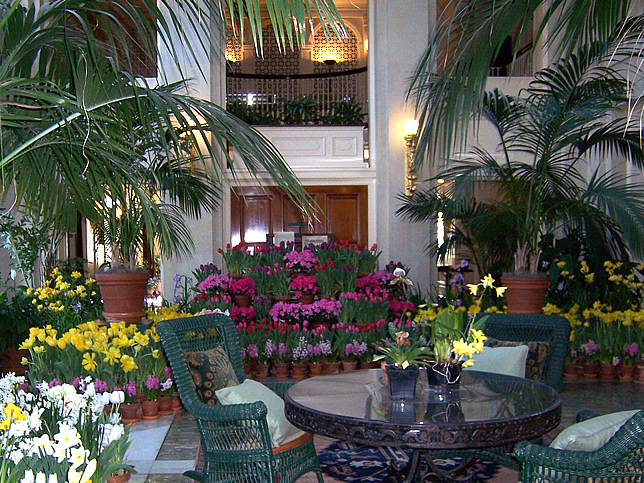
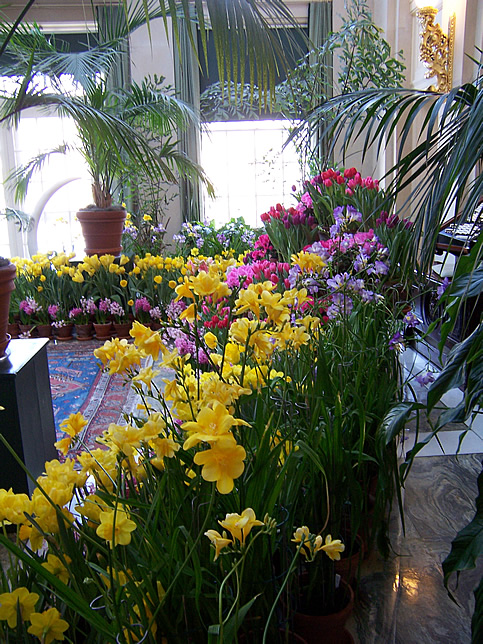
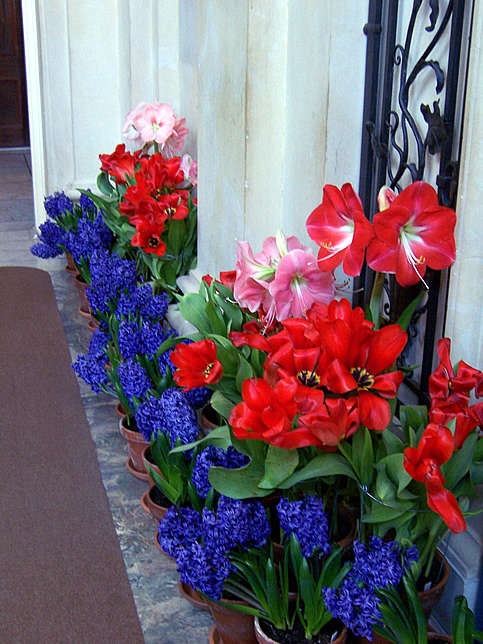
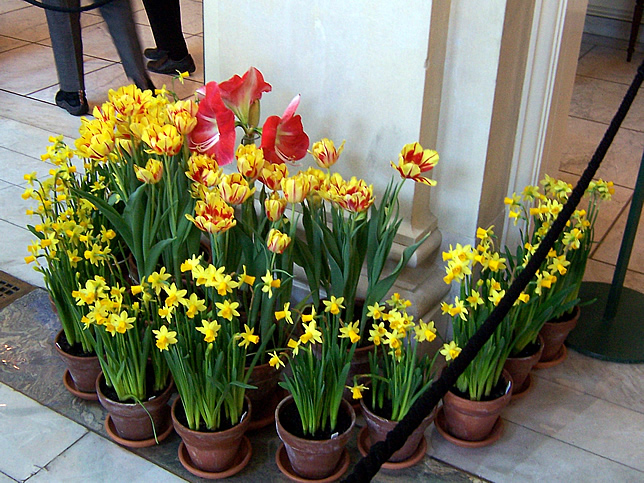
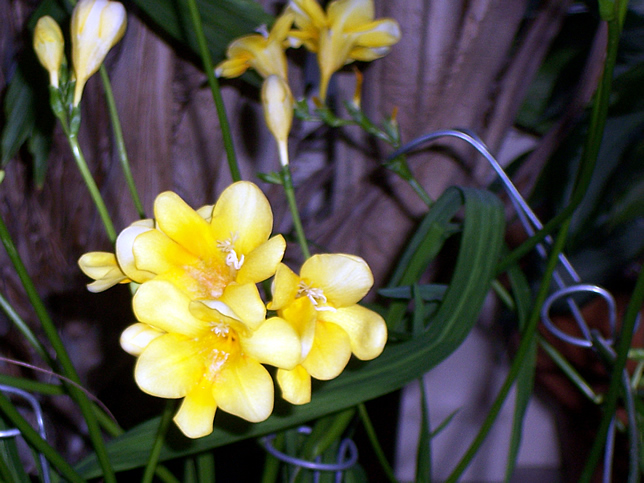
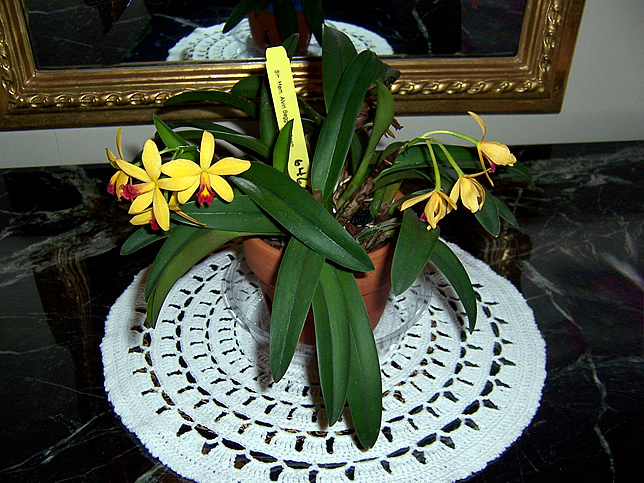
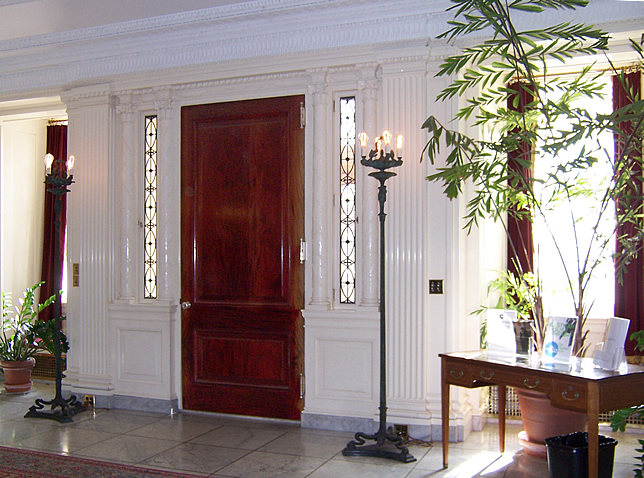
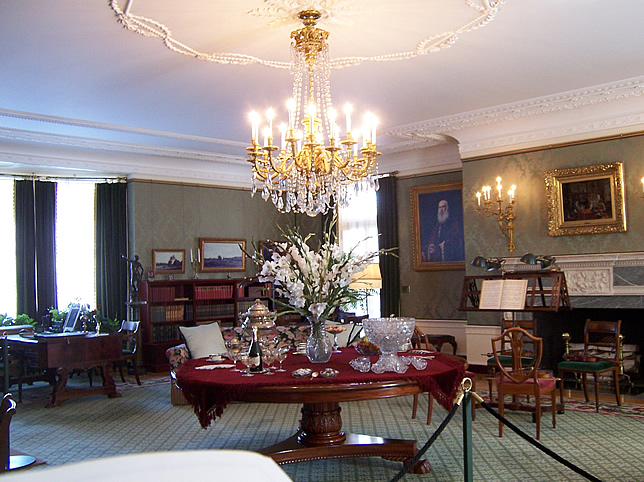
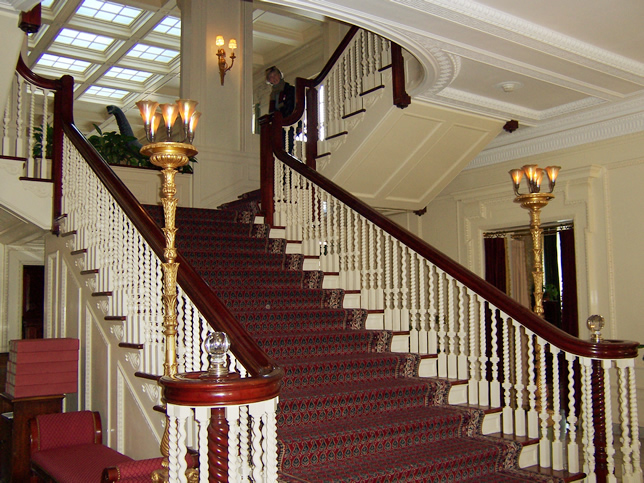
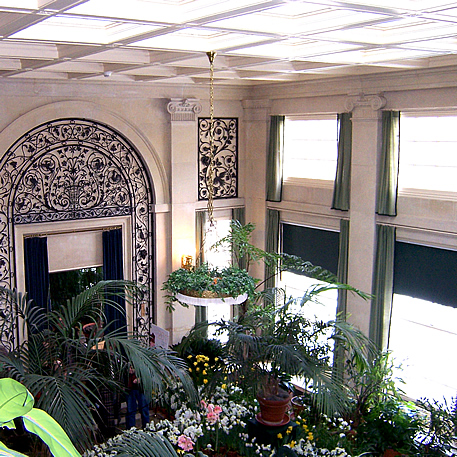
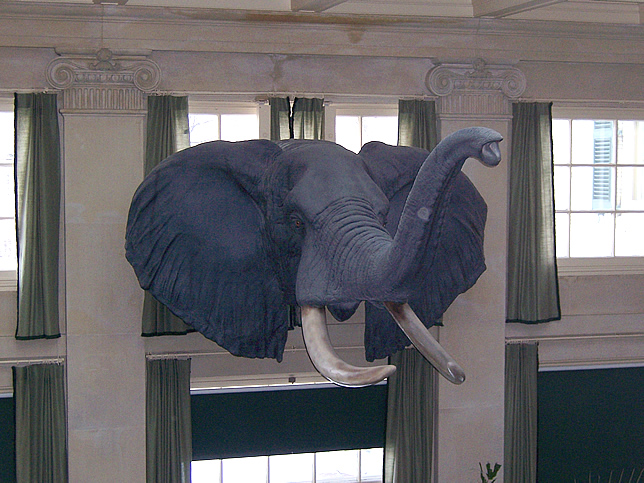
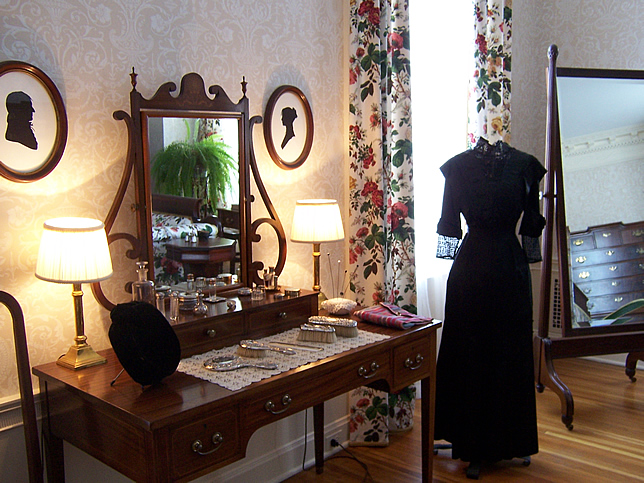
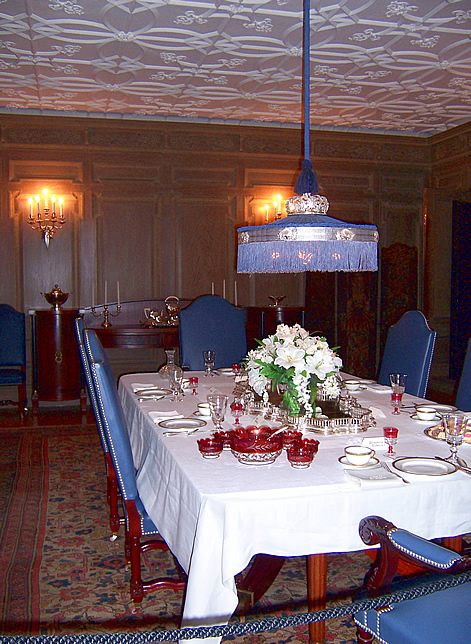
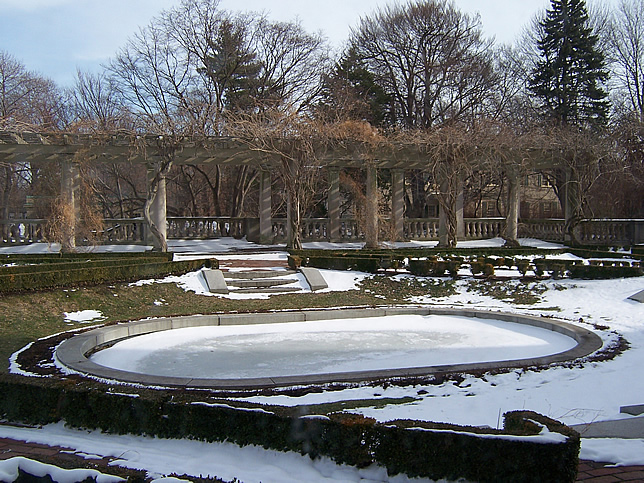


Great pictures promoting lovely thoughts and smells of spring. Come spring come.
Comment by Barb Benedict — February 22, 2011 @ 12:49 pm